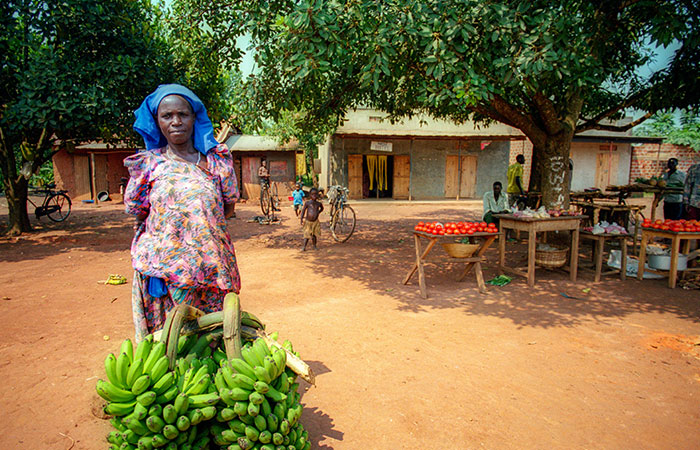Cultural Encounters in Uganda is a culturally diverse country, with over 56 different ethnic groups residing within its borders.
Baganda (Central Region)
The Baganda people form the largest ethnic group in Uganda, primarily inhabiting the central region. Known for their vibrant music and dance, the Baganda are famous for traditional ceremonies like the Kwanjula (marriage introduction) and the Buganda Kingdom’s annual festival, known as the Buganda Kingdom’s annual festival.
Basoga (Eastern Region)
They are known for their agricultural lifestyle, with fishing being a significant part of their culture due to their proximity to Lake Victoria. The Basoga are also renowned for their traditional dance forms, such as the Gishu dance.
Karamojong (North-eastern Region)
They are pastoralists known for their strong emphasis on cattle keeping. Their culture is deeply rooted in cattle herding, and they have distinctive attire and adornments, such as the colourful beads worn by women.
Bakiga (Southwestern Region)
They have a rich farming tradition and are known for their terraced farming practices, which allow them to cultivate steep slopes. The Bakiga are also recognised for their vibrant Imishanana dance and storytelling traditions.
Iteso (Eastern Region)
The Iteso people reside mainly in the eastern part of Uganda. They are known for their elaborate initiation ceremonies, called “Emorimori,” which mark the transition from childhood to adulthood. The Iteso are also renowned for their basket weaving skills and traditional music.
Acholi (Northern Region)
They have a rich cultural heritage, with traditional practices such as the “Bwola” dance, performed during various celebrations and rituals. The Acholi are also recognised for their oral traditions and storytelling.
These are just a few examples of the diverse cultures present in Uganda.
Each ethnic group has its own unique customs, traditional clothing, music, dance forms, and folklore, contributing to the vibrant cultural mosaic of the country. Exploring Uganda provides an opportunity to immerse oneself in these rich cultural traditions, experience local hospitality, and gain a deeper understanding of the diverse communities that call Uganda home.
The Batwa Culture (we have more of the videos) (compiling the works of COES among the Batwa people) In addition to the well-known cultures in Uganda, there are also lesser-known ethnic groups that contribute to the country’s cultural diversity. One such group is the Batwa, also known as the “Twa” or “Pygmies.” The Batwa are an indigenous forest-dwelling community with a unique cultural heritage.
The Batwa people traditionally lived in the forests of southwestern Uganda, particularly in the Mgahinga Gorilla National Park and Bwindi Impenetrable Forest. They have a deep connection with the natural environment and possess extensive knowledge of forest resources and survival skills.
Historically, the Batwa lived as hunter-gatherers, relying on the forest for their sustenance. They have a profound understanding of medicinal plants, traditional hunting techniques, and gathering practices. Music and dance play an integral role in Batwa culture, with vibrant songs and rhythmic dances reflecting their deep spiritual beliefs and ancestral traditions.
Sadly, due to the creation of national parks and conservation efforts, the Batwa people have faced significant challenges in maintaining their traditional way of life. Many have been displaced from their ancestral lands and struggle with social and economic integration into mainstream society. Efforts are being made to preserve their cultural heritage and improve their livelihoods through initiatives such as cultural tourism and community development projects.
Discovering the Batwa culture provides a unique opportunity to learn about an often-overlooked indigenous community in Uganda. Engaging with the Batwa offers insight into their rich traditions, harmonious relationship with nature, and the challenges they face in a rapidly changing world. Supporting initiatives that empower and uplift the Batwa community can contribute to the preservation of their cultural heritage and help improve their lives.
Each group has its own unique traditions, practices, and languages, contributing to the rich tapestry of Ugandan culture. Here is a simplified overview of some of the prominent cultures in Uganda, along with their general locations and notable practices.

